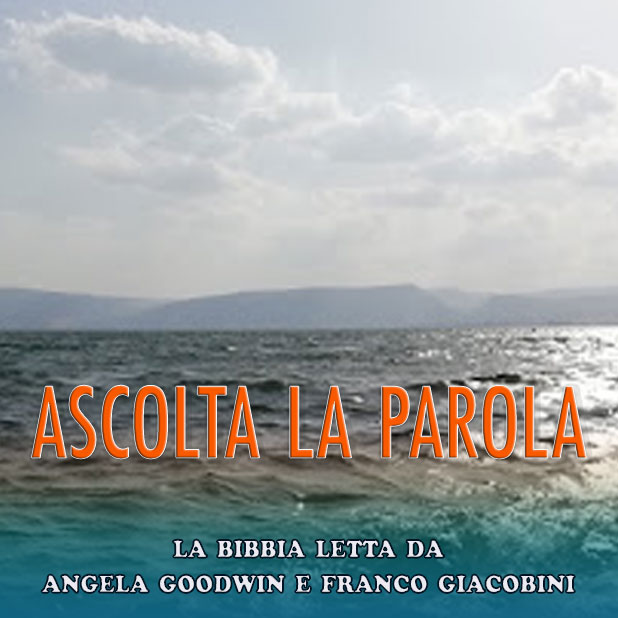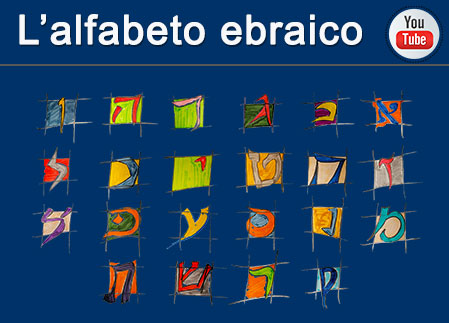National Conference of Catholic Bishops/United States Catholic Conference
Stati Uniti d'America 31/10/2000
WASHINGTON (October 31, 2000) -- Catholic leaders in the United States have issued a letter of appreciation for the recently published Dabru Emet: a Jewish Statement on Christians and Christianity."We welcome this gesture of reconciliation offered on the eve of Yom Kippur (The Day of Atonement) in the spirit of repentance and humility modeled for us by Pope John Paul II during his historic visits to the Great Synagogue of Rome and to Jerusalem itself," they said.
The letter of appreciation, entitled "The Power of Words: A Catholic Response to Dabru Emet," was signed by Cardinal William Keeler of Baltimore, Episcopal Moderator, Catholic-Jewish Relations of the National Conference of Catholic Bishops, Bishop Tod D. Brown of Orange, California, Chairman, Bishops' Committee for Ecumenical and Interreligious Affairs (BCEIA), and members and consultants to the BCEIA.
The origins of the Jewish statement and Catholic response date to 1947 when a group of Protestant and Catholic Christians met in Seelisberg, Switzerland to consider the implications for their churches of the devastation recently visited upon the Jewish people by the Holocaust. They issued ten points on how Christians should speak about Jews and Judaism. Though they represented only themselves and not their official institutions, their words are considered to have had a profound effect on numerous statements by Christian groups at all levels, including the Second Vatican Council's declaration Nostra Aetate.
Some 50 years later, a group of Jewish thinkers gathered in Baltimore to formalize a response to the Seelisberg statement. By the time the resulting statement, Dabru Emet ("To Speak the Truth") was published, some 170 leading Jewish figures, both academic and religious, had signed on.
"For our part, as representative Catholic leaders involved in the dialogue, we wish to urge Catholics throughout the United States to read (Dabru Emet) with care and loving respect," said the letter of appreciation. "Through dialogue, we have come to understand something of the pain of centuries of Jewish suffering at the hands of Christians that lies just underneath the surface of this document and why, therefore, it is such a significant contribution to further progress in Jewish-Christian relations."
The Catholic bishops expressed the hope that Dabru Emet will be used as the basis for ongoing conversations between parish and synagogue congregations throughout the country, noting it is on the agenda of the ongoing dialogue between the Bishops' Committee for Ecumenical and Interreligious Affairs and the National Council of Synagogues. "It is a great gift to have as we Christians and Jews move together into what is, after all, the third millennium of our too-often troubled history," they wrote.
A copy of the Catholic response was sent to Rabbi David Sandmel of the Institute for Christian-Jewish Studies in Baltimore by Dr. Eugene J. Fisher of the BCEIA Secretariat. He asked that it be shared with the drafters of Dabru Emet.
NOTE: Please find below a copy of "The Power of Words: A Catholic Response to Dabru Emet" as well as a copy of Dr. Fisher's letter to Rabbi Sandmel./ / Dabru Emet, which was released in September, was published in ORIGINS, September 21, 2000, Vol. 30, #15, p. 225-228.
October 18, 2000
Rabbi David Sandmel
Institute for Christian-Jewish Studies
1316 Park Ave.
Baltimore, MD 21217
Dear Rabbi Sandmel:
Shalom! As we approach Simchat Torah in this new year of 5761, I would ask you to share the attached with the drafters of Dabru Emet: A Jewish Statement on Christians and Christianity. It is a letter of appreciation for the Jewish statement signed by Cardinal William H. Keeler as Episcopal Moderator for Catholic-Jewish Relations for the National Conference of Catholic Bishops, along with the Chairman, members and consultants to the Bishops' Committee for Ecumenical and Interreligious Affairs.
We in the Catholic community are deeply appreciative of the care, sensitivity and, indeed, courage that went into the drafting and signing of Dabru Emet. We look forward to continuing dialogue with Jewish leadership over it.
Sincerely,
Dr. Eugene J. Fisher
Associate Director
cc: H.E. William Cardinal Keeler
Rabbi Joel Zaiman
Rabbi Michael Signer
The Power of Words: A Catholic Response to Dabru Emet
In Seelisberg, Switzerland, in 1947, in the immediate wake of World War II, a group of Christians, Protestants and Catholics, gathered together to ponder the implications for their churches of the devastation visited upon the Jewish people by the Holocaust. They issued, together, ten simple points on how Christians should speak about Jews and Judaism. Though they represented only themselves and not their official institutions, their words had weight and over time have born much fruit, reflected in numerous powerful statements by Christian groups on all levels ranging from the World Council of Churches and the Second Vatican Council (Nostra Aetate, 1965), on the one hand, to national and local Christian bodies on the other. In 1947, the ten words of the Seelisberg statement, while seen by some of their fellow Christians as bold and visionary, were deemed by many others to be marginal and even eccentric. Yet they carried the day and, in retrospect, can be said to have been truly prophetic in its most profound sense.
In Baltimore, as the turning of the Third Millennium drew near, a group of Jewish thinkers gathered from around the United States to formalize a response. Four drafters were chosen, and a work that was to consume many minds for many months began. By the time the resulting statement, Dabru Emet ("To Speak the Truth"), was published simultaneously in Baltimore and New York, some 170 leading Jewish figures, both academic and religious, had signed on. It is a remarkable achievement, as those of us in the Catholic community who best know the Jewish community through years of dialogue can attest. We welcome this gesture of reconciliation offered on the eve of Yom Kippur (The Day of Atonement) in the spirit of repentance and humility modeled for us by Pope John Paul II during his historic visits to the Great Synagogue of Rome and to Jerusalem itself.
For our part, as representative Catholic leaders involved in the dialogue, we wish to urge Catholics throughout the United States to read it with care and loving respect. Through dialogue, we have come to understand something of the pain of centuries of Jewish suffering at the hands of Christians that lies just underneath the surface of this document and why, therefore, it is such a significant contribution to further progress in Jewish-Christian relations. We hope it will be used as the basis for ongoing conversations between parish and synagogue congregations throughout the country. There is much in it with which Catholics will agree instantly and whole-heartedly, and much that will spur further consideration and dialogue between our two communities, and, we daresay, within each faith community as well!
Like Seelisberg and Nostra Aetate, the text is short and seemingly simple. Like them, however, each carefully crafted phrase is pregnant with meaning challenging us as Christians to careful and prayerful meditation. One test of such statements addressed to one's own community but with an awareness that another community is, as it were, looking over our shoulder as we write, is whether the onlooking community will see themselves validly portrayed there. By and large we do, and we are grateful for and respectful of the immense scholarship and religious openness that is required to do such a thing just right.
Dabru Emet will surely and quite rightly be the first item on the agenda of many a dialogue in the years ahead. It is already on the agenda, for example of the ongoing dialogue between our Bishops' Committee for Ecumenical and Interreligious Affairs and the National Council of Synagogues. It covers a range of issues from the theological to the practical that merit further exploration between us. It is a great gift to have as we Christians and Jews move together into what is, after all, the third millennium of our too-often troubled history. May we say to the drafters and to all the signers, "May you go from strength to strength!"
His Eminence William Cardinal Keeler
Archbishop of Baltimore
Episcopal Moderator
Catholic-Jewish Relations
National Conference of Catholic Bishops
The Most Rev. Tod D. Brown
Bishop of Orange in California
Chair, Bishops' Committee for Ecumenical
and Interreligious Affairs
.
The Most Rev. Alexander J. Brunett
Archbishop of Seattle
The Most Rev. Oscar H. Lipscomb
Archbishop of Mobile
The Most Rev. Theodore E. McCarrick
Archbishop of Newark
The Most Rev. Rembert G. Weakland, OSB
Archbishop of Milwaukee
The Most Rev. Stephen E. Blaire
Bishop of Stockton
The Most Rev. Edwin M. Conway
Auxiliary Bishop of Chicago
The Most Rev. Joseph J. Gerry, OSB
Bishop of Portland
The Most Rev. Howard J. Hubbard
Bishop of Albany
The Most Rev. Basil H. Losten
Eparch of Ukrainian Catholic Diocese of Stamford
The Most Rev. Joseph F. Martino
Auxiliary Bishop of Philadelphia
The Most Rev. William F. Murphy
Auxiliary Bishop of Boston
The Most Rev. Plácido Rodríguez, CFM
Bishop of Lubbock
The Most Rev. Nicholas J. Samra
Bishop of Newton
The Most Rev. Richard J. Sklba
Auxiliary Bishop of Milwaukee
The Most Rev. William S. Skylstad
Bishop of Spokane
The Most Rev. John J. Snyder
Bishop of St. Augustine
The Most Rev. James C. Timlin
Bishop of Scranton
__________________________________
Office of Communications
National Conference of Catholic Bishops/United States Catholic Conference
3211 4th Street, N.E., Washington, DC 20017-1194 (202) 541-3000
June 03, 2003 United States Conference of Catholic Bishops
239 visualizzazioni.
Inserito 01/01/1970
Relazioni Ebraico-Cristiane
Ultime novità nel sito
- 19/04/2020: Articolo - L’enigma della Maddalena
- 23/02/2020: Articolo - Il locus amoenus nelle catacombe ebraiche e cristiane di Roma
- 16/02/2020: Articolo - Il profetismo nel Vicino Oriente antico
- 13/02/2020: Articolo - I Profeti della Cappella Sistina
- 09/02/2020: Articolo - Gerusalemme e la Terra Santa di Israele


